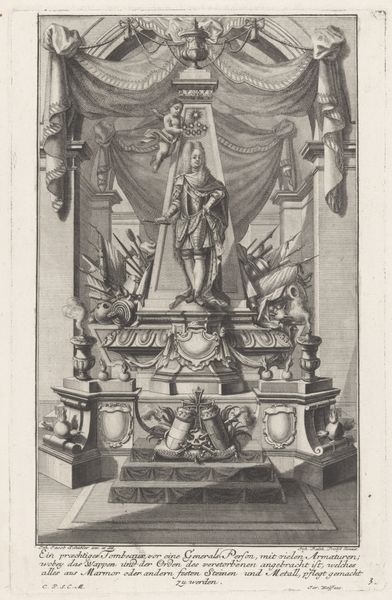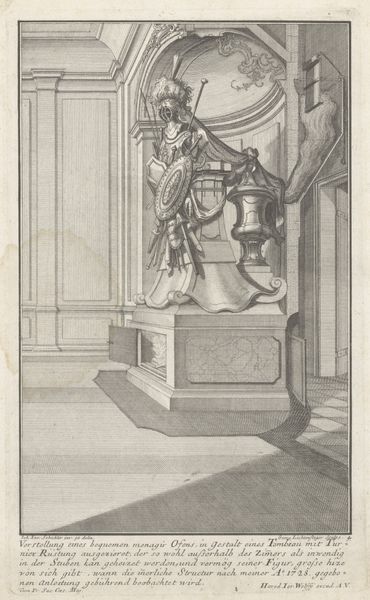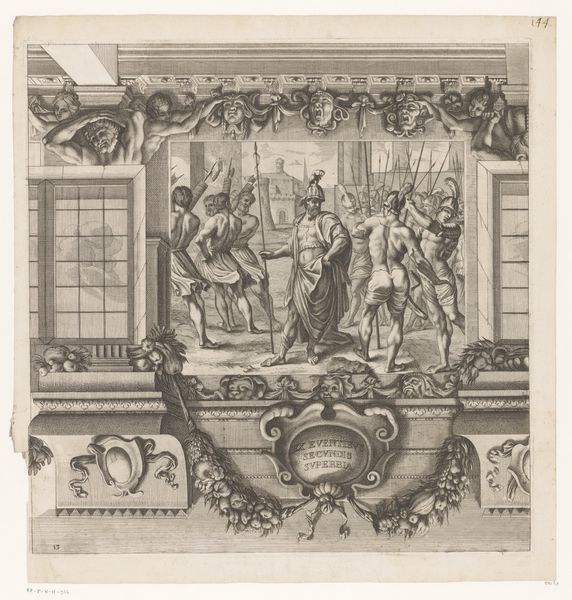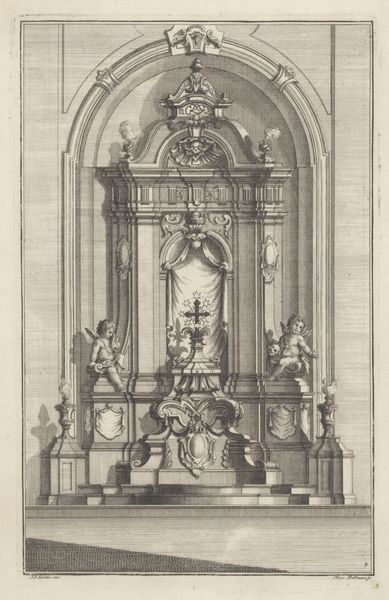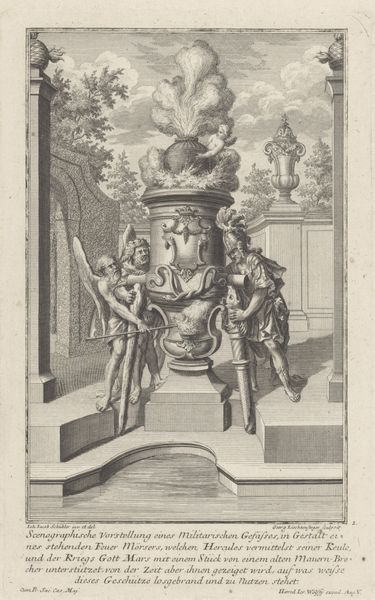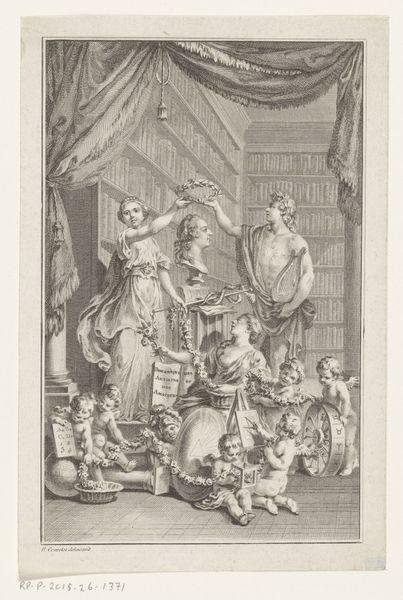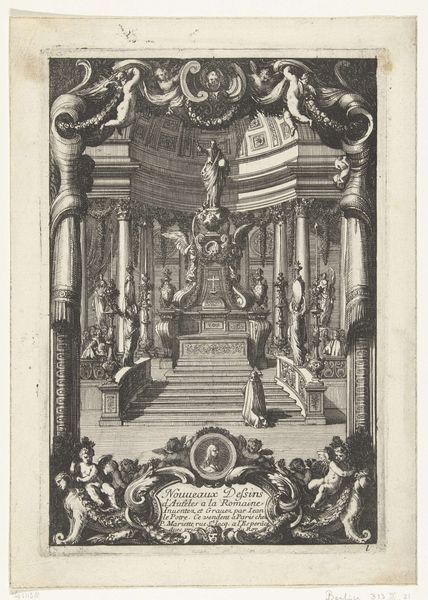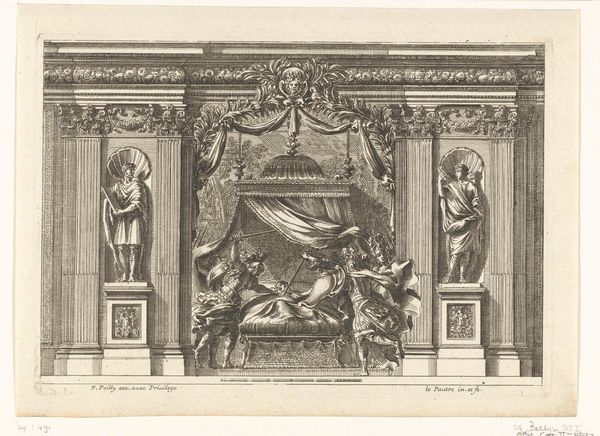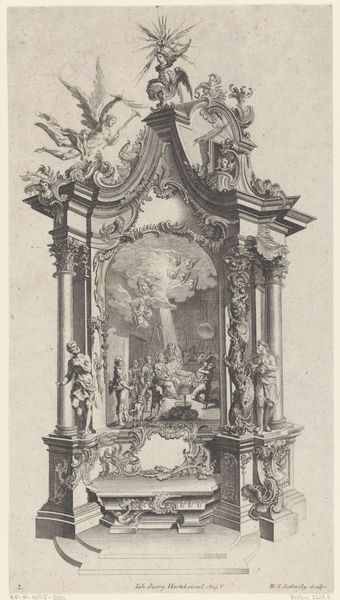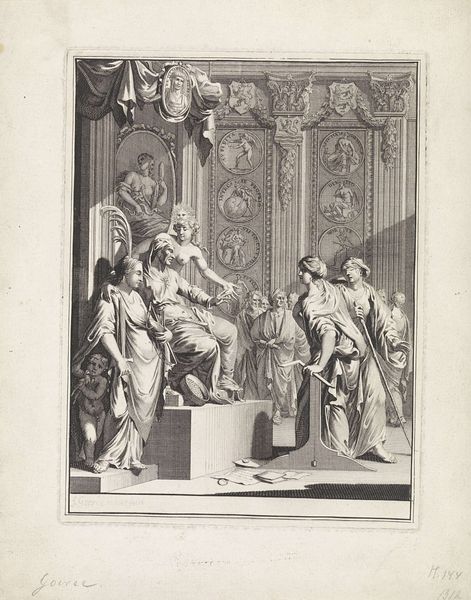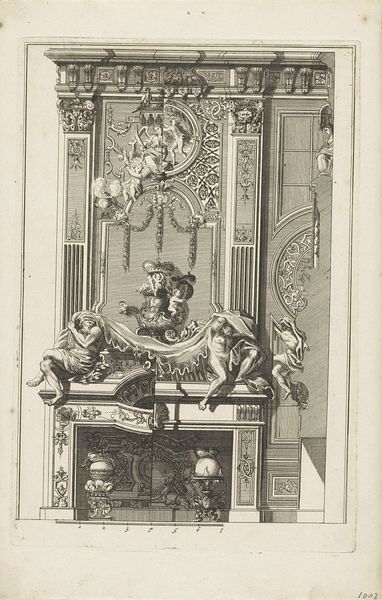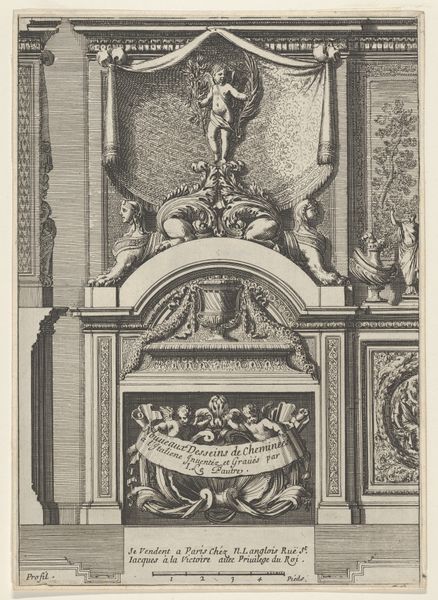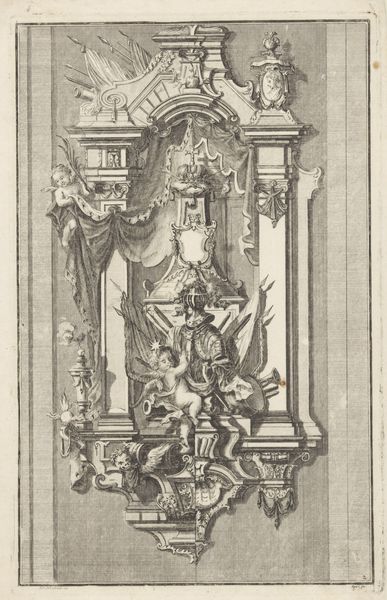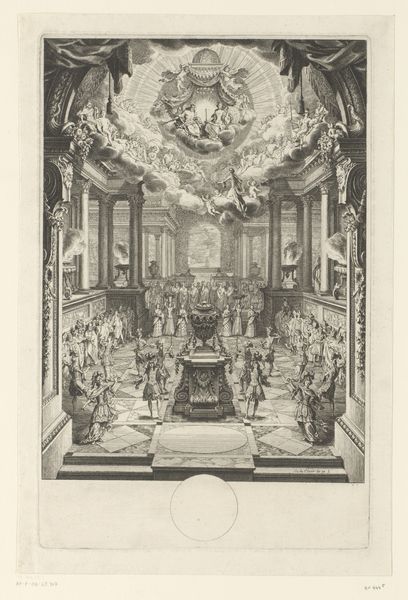
Dimensions: height 299 mm, width 192 mm
Copyright: Rijks Museum: Open Domain
Editor: This is "Grafmonument met personificatie van de dood," or "Funerary monument with personification of death," an engraving by Johann Balthasar Probst from between 1709 and 1724. It has a stark, allegorical feel to it. I'm struck by the contrast between the decaying figure of Death and the seemingly carefree cherub. How do you interpret this work, especially in its historical context? Curator: It's a fascinating piece, isn't it? To understand it, we have to consider the 18th-century obsession with *memento mori* and the Baroque fascination with elaborate displays, even in death. The figure of Death, the crumbling architecture, the vanitas symbols like the extinguished candle… all speak to the ephemerality of life and earthly achievements. But notice *who* Death is targeting – a set of symbols. What societal power structures might the artist be critiquing by portraying death destroying the tools of calculation and wealth? Editor: I hadn’t considered that the symbols were targets, not just bystanders. It almost feels like a political statement, like Death is an equalizer dismantling worldly power. Curator: Precisely! Think about the rising tensions between the aristocracy and the emerging merchant classes during this period. The artwork could be interpreted as a commentary on the futility of social status and earthly possessions in the face of mortality, and a questioning of those in power. Editor: So, it's not just a morbid image, but also a rather potent social critique. Curator: Exactly. And these images circulated widely thanks to printmaking, spreading potentially subversive ideas among a growing audience. What do you think of the artist's choices in representing Death with a crown? Does this have anything to say about societal hierarchies? Editor: I never considered art of this period as potential tools for change; I'll need to reconsider many artists as I dive deeper in my history training. Curator: Indeed! And as we interpret Probst's political motives and cultural influence. Art allows us to challenge social norms in powerful, unseen ways.
Comments
No comments
Be the first to comment and join the conversation on the ultimate creative platform.
